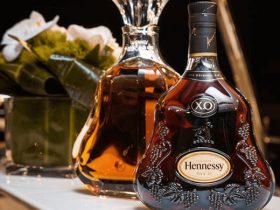

Subscribe to our Newsletter!
Get our latest news straight into your inbox


When it comes to beverages, the world of spirits offers a diverse range of options to indulge in. Two popular choices that often spark curiosity and debate among connoisseurs are brandy and sherry. While both fall under the category of fortified wines, brandy and sherry have distinct characteristics that set them apart. Let’s delve into the unique qualities of brandy and sherry, exploring their origins, production methods, flavor profiles, and serving recommendations.
Brandy: A Toast to Tradition
Brandy, derived from the Dutch word “brandewijn” meaning burnt wine, is a spirit made by distilling wine or fermented fruit juice. With a rich history dating back centuries, brandy has earned a reputation for its complexity and depth of flavors. Brandy production varies across regions, with notable varieties including Cognac from France, Armagnac from Gascony, and Pisco from South America.
Examples of Brandy:
1. Cognac: Hailing from the Cognac region of France, Cognac is renowned for its elegant and refined character. Made from specific grape varieties such as Ugni Blanc, Cognac undergoes double distillation in copper pot stills and ages in oak barrels, resulting in a smooth and sophisticated spirit with notes of dried fruit, oak, and spice.
2. Armagnac: Originating from Gascony in southwestern France, Armagnac is considered the oldest brandy in France. Distilled once in column stills, Armagnac offers a more rustic and robust flavor profile compared to Cognac, with pronounced notes of dried fruits, nuts, and earthy undertones.
Sherry: A Taste of Spain
Sherry, a fortified wine produced in the Jerez-Xérès-Sherry region of Spain, holds a special place in the world of wine enthusiasts. Known for its versatility and unique aging process, sherry offers a diverse range of styles, from bone-dry Fino to lusciously sweet Pedro Ximénez.
Examples of Sherry:
1. Fino: A pale, dry style of sherry, Fino undergoes biological aging under a layer of yeast called “flor.” This process imparts delicate flavors of almonds, green apples, and sea breeze, making Fino a perfect aperitif to stimulate the palate.
2. Oloroso: In contrast to Fino, Oloroso sherry is oxidatively aged without the protective flor, resulting in a darker hue and richer, nuttier flavors. Oloroso showcases notes of caramel, toasted nuts, and dried fruits, making it an excellent companion to hearty dishes and cheeses.
The Key Differences
Production Process:
– Brandy is distilled from wine or fruit juice, while sherry is a fortified wine made from white grapes grown in the Sherry region of Spain.
Aging:
– Brandy typically matures in oak barrels, developing complex flavors over time, whereas sherry undergoes a unique aging process known as the solera system, which involves blending different vintages to achieve consistency.
Flavor Profiles:
– Brandy is characterized by its fruit-forward, spicy, and woody notes, while sherry offers a spectrum of flavors ranging from dry and nutty to sweet and luscious, influenced by the aging process and grape varietals.
Serving Suggestions:
– Brandy is often enjoyed neat or as a base for cocktails like the classic Sidecar or Brandy Alexander.
– Sherry can be served chilled as an aperitif, paired with tapas, or used in cooking to add depth to savory dishes.
In conclusion, brandy and sherry may both fall under the category of fortified wines, but their distinct origins, production methods, flavor profiles, and serving recommendations set them apart. Whether you prefer the elegance of Cognac or the diversity of sherry styles, exploring the world of brandy and sherry offers a delightful journey into the realm of spirits.
– Advertisement –
Subscribe To Our Newsletter
Stay informed with our latest news delivered directly to your inbox.















Leave a Review